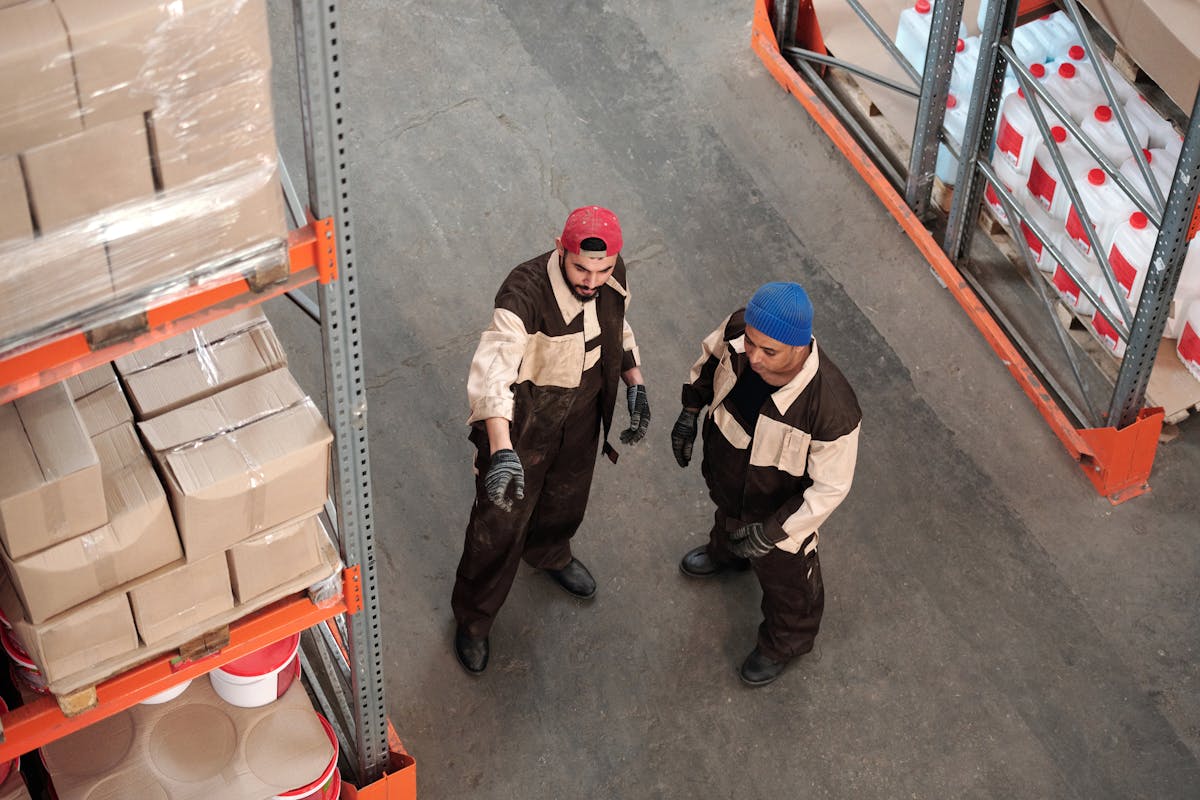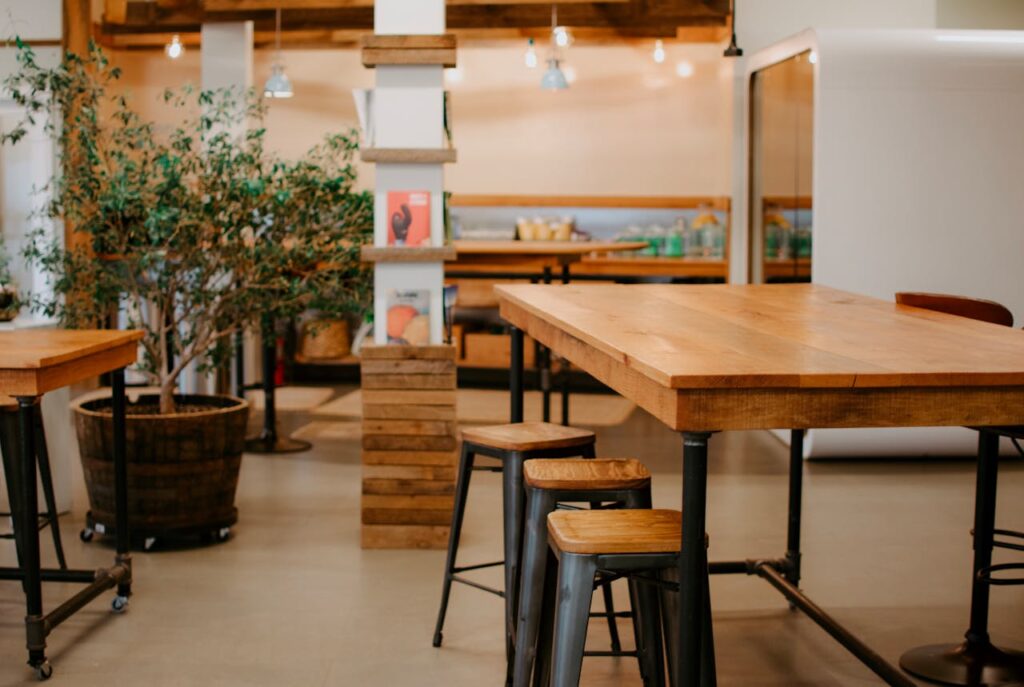Vietnam is one of the leading exporters of furniture around the world. In fact, according to a report by Vietdata, the country is the second-largest exporter of wood products in the Asia-Pacific region.
Not only are Vietnam furniture manufacturers known for making high-quality and eco-friendly pieces, but the country also has more free international trade agreements that make shipping straightforward.
However, for furniture businesses that want to source products from the Land of the Blue Dragon, it’s important to understand the export process. It comes with complexities, and if not handled properly, can lead to legal issues, delays, and even losses. Let us provide you with all the information you need through this guide!
Let’s take a closer look at some key players you need to know when importing products from Vietnam furniture manufacturers.
Key Players When Importing Products from Furniture Manufacturers in Vietnam
The Vietnam Furniture Manufacturer/ Supplier
Manufacturers and suppliers are responsible for the quality and design of the products you’re ordering. They ensure that every piece meets your desired specifications by managing quality control throughout the production process.
When communicating with Vietnamese furniture manufacturers, make sure to discuss details, such as shipping terms, timelines, and any applicable regulatory requirements. Make sure you have a written agreement.
Looking to import Vietnamese furniture? Do you want to know how to order and the logistics around shipping? Contact Designer Furniture Vietnam today.
Vietnam Export Customs
Vietnam Customs oversees importation regulations and is your first point of interaction with the country’s government. Here are its key responsibilities and functions:
1. Regulatory Compliance
The department verifies the accuracy and completeness of import documents, such as trade agreements, certificates of origin, and other relevant paperwork. This helps maintain the integrity and legality of the importation process.
2.Tariff Classification and Duty Assessment
Vietnam Customs classifies exported goods according to the country’s tariff schedule and assesses applicable taxes. To prevent issues when filing customs declaration forms, you must familiarize yourself with the administrative rulings concerning tariff classification set forth by the Vietnamese government.
3. Customs Clearance Procedures
Before your goods leave the country, customs officers examine the shipment to ensure compliance with their export/import regulations and verify the accuracy of documents. This expedites the movement of goods across international borders and streamlines the process for importers.
4. Trade Facilitation and Security
To ensure that proper import/export regulations are enforced, Vietnam customs authorities also collaborate with other government agencies to facilitate legitimate trade and prevent the exit and entry of illegal goods, contraband, and prohibited items.
Shipping and Logistics Company
Shipping and logistics companies handle all aspects of shipping. From picking up furniture items from the manufacturer’s warehouse to transporting them to the designated trade port in Vietnam, these companies ensure your items are good and secure for international shipment.
Depending on the volume of items being shipped, budget, and timeline, the shipping process can take several weeks, so it’s important to choose a reliable carrier.
Here are 10 of the best shipping companies in Vietnam that provide export services to Europe, the US, the UK, and Australia:
- FNM Vietnam
- Gemadept Corporation
- Kerry Apex
- Wingo Logistics
- HVT Logistics
- T&M Forwarding
- Cargonet Logistics Vietnam
- Saigon Ocean International Logistics
- Royal Cargo
- Bull Lines Group
By partnering with these reputable shipping and logistics companies, you can benefit from their extensive expertise and global network to ensure smooth importation of your furniture products.
Vietnam Quality Control and Inspection Services
Quality control and inspection companies play a crucial role in ensuring the integrity of products exported from Vietnam, including furniture. Working with furniture manufacturers in Vietnam, they conduct thorough inspections and audits at various stages of the production and shipment process to identify and address issues related to product quality, regulatory compliance, and safety. With their assistance, you can mitigate the risks associated with product defects and non-compliance with import regulations.
Here are also the top quality control and inspection services based in Vietnam that you can hire:
You can rely on these third-party companies to ensure the delivery of furniture products that not only comply with regulatory requirements but also meet your customers’ expectations.
Import Customs in Your Country
Acting as the gatekeeper to your domestic market, the customs authority in your home country ensures that imported products comply with local laws and restrictions. Like the Vietnamese customs, they assess if goods going into your country comply with tariff classifications and duty payments. They also enforce trade regulations and conduct inspections to prevent the entry of restricted items, such as furniture that violates environmental laws.
For more information that you can use in getting in touch with your local customs authority, you can visit the following sites:
- European Customs Portal
- U.S. Customs and Border Protection
- HM Revenue & Customs
- Australian Border Force
Legal Requirements For Importing Furniture From Vietnam
Understanding the legal framework is crucial when importing products from Vietnam furniture factories. Here are the essential requirements that you need to comply with.
Investment Certificate from the Vietnamese Ministry of Planning and Investment
While Vietnam’s import and export regulations don’t require importers a specific export license, you still need to adhere to some procedures to make sure you’re importing furniture legally from the country.
One of these requirements is registering with the Ministry of Planning and Investment and acquiring an investment certificate. This official documentation authorizes you to import products, such as furniture, from Vietnam and demonstrates your commitment to complying with the country’s laws governing foreign trade.
Customs Declarations
Part of Vietnamese Customs regulations requires importers to provide detailed information about the furniture being shipped, including their descriptions, values, quantities, and origin. This is under Law No. 54/2014/QH13, which stipulates the management of customs regarding the goods permitted to be imported/exported from/to Vietnam.
These declarations allow customs officials to accurately assess the tariffs and other taxes applicable to the imported goods and, of course, verify their legality with the import/export requirements. Remember—failure to properly declare imported goods, or providing false information, can lead to delays in customs clearance, fines, and even confiscation of products.
Export Taxes
Understanding the rules regarding export taxes and duties is crucial to avoid problems when clearing customs and avoid surprises. Speak with your chosen Vietnam furniture manufacturer and your logistics partner to determine who is responsible for these charges and factor them into your pricing strategy.
According to a report by the Investment and Trade Promotion Centre, the export taxes range from 0% to 45%, and there would be a value-added tax imposed, which could also vary depending on the furniture type and material.
Understanding the legal framework when importing furniture from Vietnam enables you to go ahead with the process seamlessly and prepares you for the potential hurdles you may face, safeguarding your business from costly mistakes!
Steps to Take When Importing from Vietnamese Furniture Manufacturers

Step 1: Classify the Items to Be Imported
Accurate classification ensures you pay the correct taxes and adhere to specific regulations. Work with your manufacturer to classify your products appropriately.
Step 2: Make a Contract for International Trading
A robust contract protects all parties involved and sets expectations for quality, timing, and costs. Attorneys well-versed in international trade issues can help craft a legally binding agreement.
Step 3: Have a Product Quality Assessment Done
Quality control is non-negotiable, especially for the long-distance importation of high-value goods. Insist on a product quality assessment to ensure your goods meet your standards before they leave Vietnam.
Step 4: Register for Goods Inspection
Many countries require imported goods to undergo inspection. Register with the relevant authorities well in advance to avoid last-minute panic.
Step 5: Secure a Delivery License
In some countries, a delivery license is required before you can apply for a customs declaration. Research this requirement early on to avoid timing conflicts later.
Step 6: Transmit a Customs Declaration
This is the official start of the importation process. Ensuring your customs declaration is accurate and complete will save you time and money.
Step 7: Prepare and Complete the Required Customs Documents
An organized approach to completing your customs documents minimizes errors and delays. You should communicate and work with your logistics partner for thoroughness.
Step 8: Pay Taxes
Understanding your tax liability and being prepared to pay upon arrival at your country’s border is a fundamental aspect of cost management. So, know all of them so that your goods will be cleared in no time with your local customs authority.
Step 9: Have Your Ordered Items Shipped
Once all the paperwork is in order, it’s time to ship your goods. Stay in close communication with your freight forwarder for updates and to address any issues should they arise.
Frequently Asked Questions About Vietnam Furniture Manufacturers
[sp_easyaccordion id=”54″]Import Vietnamese Furniture with Designer Furniture Vietnam!
Designer Furniture Vietnam helps furniture businesses worldwide in sourcing, manufacturing, and importing premium Vietnamese furniture. We have a wide collection of high-end and affordable furniture designs that will suit any space, style, and budget.
Vietnam’s high-quality standards, skilled labor, and friendly international trade policies allow us to have a quick turnaround time for all our orders. If you want to import furniture from Vietnam, schedule a call with one of our representatives and place your order today!

